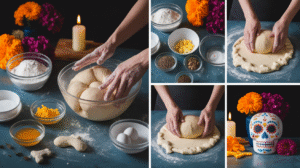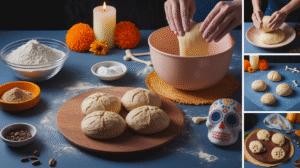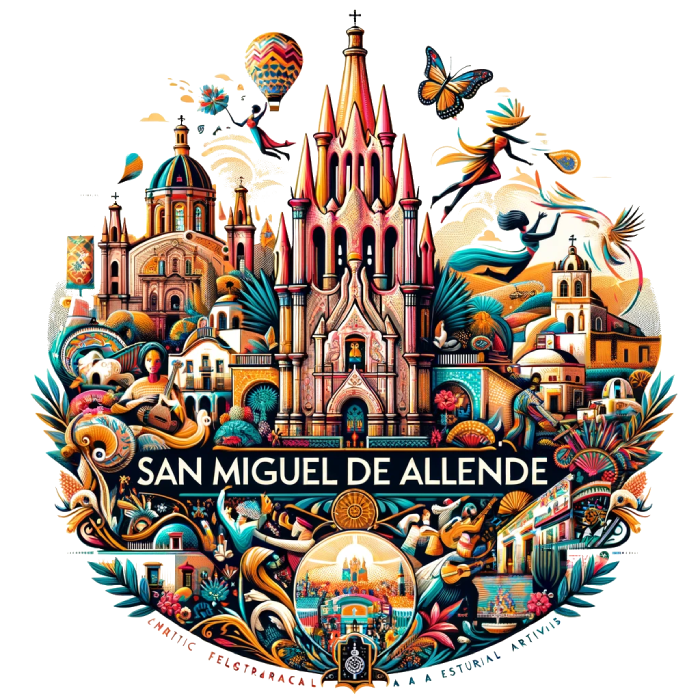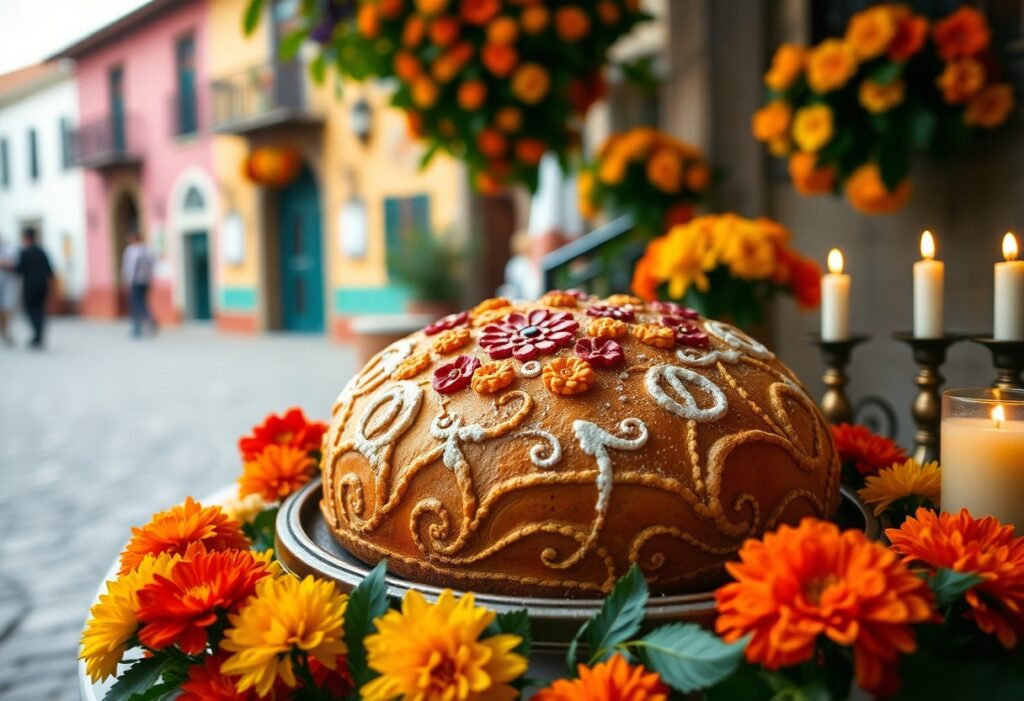Many people may not realize that pan de muerto, or ‘bread of the dead’, is a beloved Mexican tradition associated with the Day of the Dead celebrations. This sweet bread, often flavored with anise and orange, serves as a beautiful offering on ofrendas (altars) and is meant to honor and welcome back the spirits of loved ones. In this post, you’ll discover how to create your own pan de muerto, allowing you to embrace this rich cultural heritage and connect with the memories of those who have passed.
The Cultural Significance of Pan de Muerto
Pan de muerto embodies rich traditions that connect the living with the deceased during Mexico’s Day of the Dead. This unique bread, often found on ofrendas, serves as both a treat and an offering, creating an inviting atmosphere for the souls of loved ones who return to visit. Its communal preparation and enjoyment unite families, reflecting deep cultural ties between food, memory, and ritual. As you partake in this sweet bread, you share in the collective remembrance of those who came before, keeping their spirits alive in a wonderfully vibrant way.
A Sweet Tribute: The Role of Bread in Day of the Dead Tradition
The preparation of pan de muerto is more than baking; it is a heartfelt act of remembrance. Families craft this delicious bread, often with recipes passed down through generations, to honor their ancestors and celebrate life, death, and the ties that forever connect them. On this occasion, the sweet flavors of anise and orange serve as a sensory reminder of those lost, turning bread into a symbol of love and devotion, inviting spirits to join the festivities.
Symbolism in Shapes: What the Forms Represent
The shapes you create with pan de muerto are steeped in symbolism, with each form carrying profound meanings aimed at honoring the deceased. For instance, skulls represent death while crossbones symbolize the bonds between the living and the dead. These shapes are not just decorative; they serve as tangible reminders of the cycle of life and death, inviting conversation and reflection on mortality. When you shape your bread into these forms, you engage in a cultural practice that celebrates not only grief but also the joyous memories of those lost.
Specifically, the round shape of the bread symbolizes the cycle of life, eternity, and the concept of death as a new beginning. The “bones” scattered atop the bread represent the deceased, signifying their ongoing presence within family bonds. With every loaf you bake, you not only honor tradition but also breathe life into the stories of your ancestors, making pan de muerto a deeply personal and communal activity wrapped in layers of meaning and cherished memories.

Ingredients that Make It Special
The magic of pan de muerto lies in its unique combination of flavors and textures, which together celebrate the Day of the Dead tradition. This bread isn’t just a treat; it’s a symbol of remembrance, created with care and love. The necessary ingredients, from flour to sugar, provide the base, but it’s the specific additions of anise and orange that elevate this bread to extraordinary levels of taste and cultural significance.
Key Components: The Essential Ingredients for Authenticity
At the heart of pan de muerto is a blend of simple yet crucial ingredients. Flour, sugar, and yeast form the foundation, allowing the bread to rise into its delightful shape. Anise seeds and orange zest are the stars of the show, infusing the dough with fragrant notes that evoke the spirit of the holiday. Together, these ingredients yield a soft, sweet bread that honors both tradition and family, making it an unforgettable centerpiece for any ofrenda.
Flavor Profiles: Anise, Orange, and Their Cultural Resonance
The flavor profile of pan de muerto is deeply intertwined with Mexican culture. Anise seeds contribute a warm, licorice-like essence, while orange zest adds a bright citrus note. These flavors are not just for taste; they are symbolic of life’s continuation and the cycle of memory, bridging the gap between the living and those who have passed. On the Day of the Dead, there’s a profound joy in sharing this bread with family, as it embodies both remembrance and celebration.
Anise, historically revered in many cultures, is known for its digestive properties and comforting aroma, making it a prized ingredient in festive foods. Orange, often associated with happiness and vitality, brings a refreshing lift that balances the sweetness of the bread. Together, they create a sensory experience that resonates with the themes of life and remembrance. Each bite evokes the intimacy of family gatherings and the loving memories of those who have departed, reinforcing the bond between past and present during this poignant celebration.
Step-by-Step Bread Making
| Mixing Ingredients | Combine 1 1/2 cups flour, sugar, salt, yeast, anise seed, and orange zest in a large bowl. |
| Heating Liquids | Heat milk, water, and butter together until the butter melts. Add to the dry ingredients. |
| Add Eggs | Incorporate eggs one at a time, ensuring thorough mixing between additions. |
| Kneading | Knead the dough for about 10 minutes until smooth, then place in a greased bowl. |
| First Rise | Cover the dough with a cloth and let it rise in a warm spot until doubled in size. |
| Punching Down | Punch down the risen dough, reserving part for decorative shapes. |
| Second Rise | Allow the formed shapes to rise again for an hour before baking. |
Preparing the Dough: Techniques and Tips for Success
Achieving the perfect pan de muerto dough involves attention to detail at every step. Begin by ensuring all your ingredients are at room temperature, particularly the eggs and butter, to encourage proper yeast activation. Gradually incorporate flour while mixing until you reach a soft, non-sticky consistency. Kneading is necessary, aim for at least 10 minutes to develop the gluten structure. Finally, create an ideal rising environment by placing the bowl in a warm, draft-free area. Thou shall pay heed to these techniques for best results.
Shaping Rituals: Creative Ideas for Forming Your Bread
Shaping your pan de muerto isn’t merely functional; it’s an expression of tradition and creativity. You can mimic the classic designs of skulls and crossbones, but don’t shy away from experimenting with custom shapes like floral motifs or even elaborate characters. Each form represents a unique homage to your loved ones, ensuring your bread is as memorable as it is delicious. To achieve fascinating designs, use sculpting tools or your hands to carefully mold the reserved dough into desired shapes, adding personal touches that reflect your family’s history.
Baking and Decorating Pan de Muerto
Baking pan de muerto is an art that combines tradition with personal flair. Begin by shaping your dough into skulls, crossbones, or any creative form that resonates with honoring your loved ones. The way you decorate your bread not only adds aesthetic appeal but also symbolizes the memories and spirits you wish to celebrate. You can use colored sugar sprinkles to give a lively touch, making this bread not just a treat, but a centerpiece for your ofrenda.
The Perfect Bake: Timing and Temperature Considerations
| Temperature | 350°F (175°C) |
| Baking Time | 40 minutes |
| First Rise | Until doubled in size (about 1 hour) |
| Second Rise | 1 hour |
Finishing Touches: Glaze and Sugar Sprinkles
Adding the final touches to your pan de muerto elevates both its appearance and flavor. Brush the warm bread with a sweet orange glaze made from sugar, fresh orange juice, and zest to enhance its fragrant quality. After glazing, coat your loaf with a sprinkling of colored sugar to celebrate its vibrant cultural significance. Each bite becomes a delightful reminder of the festive spirit and the souls you aim to honor.
The glaze not only adds a glossy finish but also infuses the bread with an extra layer of sweetness that complements the aromatic notes of anise and orange. This visual and flavorful enhancement transforms the bread into a radiant symbol of remembrance. As you brush on the glaze, let it soak slightly into the warm bread, ensuring the colored sugar adheres beautifully, creating a whimsical decoration that’s both appealing and meaningful. Enjoy the festive look of your creation while cherishing the memories it represents.
Sharing Traditions: Serving Pan de Muerto
Sharing pan de muerto is a beautiful way to honor the memory of loved ones during Mexico’s Day of the Dead. Families often gather to serve the bread alongside traditional foods and beverages, creating a festive yet reflective atmosphere. As you cut into the soft, sweet bread, its unique shapes symbolize the cyclical nature of life and death, allowing for both reverence and joy in remembering those who have passed.
Creating an Ofrenda: How to Place Bread on Altars
To properly include pan de muerto in your ofrenda, place it prominently on the altar, ideally on a clean, white cloth as a base. Decorate it with vibrant marigold flowers, candles, and photographs of your loved ones. The bread’s specific shapes can be emphasized to represent the souls of the departed, ensuring it serves as a welcoming gesture for their return.
Enjoying with Family: The Ritual of Sharing
The ritual of sharing pan de muerto reinforces familial bonds and keeps memories alive. Gather your loved ones around a table filled with this delightful bread, engaging in stories and laughter about those you miss. Savor the fluffy texture and fragrant flavors while discussing the significance of each shape and the life of the person it represents, turning the act of eating into a heartfelt tribute.
As you enjoy your pan de muerto with family, take time to reflect on the stories that shape your lives together. Each bite of this sweet bread can spark conversations about cherished memories, values, and traditions passed down through generations. This sharing not only nourishes your bodies but also nurtures your connections, keeping the spirits of those who have left us ever-present in both heart and mind. Embrace the sweetness of the moment, allowing your loved ones to join in the celebration, ensuring that their memories live on through you.

Final Words
To wrap up, preparing Pan de Muerto allows you to connect with the rich cultural heritage of Mexico’s Day of the Dead while creating a delicious bread to honor your loved ones. By following this traditional recipe, you can embrace the flavors of anise and orange, allowing the aroma to fill your home as you shape, bake, and decorate your loaves. Whether you opt for a large loaf or smaller versions, this bread not only serves as a festive treat but also as a meaningful tribute to those who have passed. Enjoy baking and celebrating this beautiful tradition!





I love how you emphasize the cultural significance of pan de muerto in your post. Every time I make it with my family, it feels like a sacred ritual, bridging our past and present. The sweet scent of the bread baking instantly brings back memories of my grandparents, who shared their stories with us as we rolled the dough.
It’s fascinating to see how food can serve as a bridge between the past and present in cultural celebrations. Pan de muerto is such a beautiful representation of that connection. When I think about the rituals surrounding Día de los Muertos, I’m reminded of how powerful it is to gather with family, share stories, and prepare these special foods together. It becomes less about the act of eating and more about honoring our loved ones and keeping their memories alive.
The celebration of Día de los Muertos through the preparation and sharing of pan de muerto offers a fascinating glimpse into how food serves not only as sustenance but also as a vessel for cultural memory and communal identity. As you beautifully articulated, this sweet bread holds profound significance beyond its rich flavors—it’s a means of honoring our ancestors and reconnecting with those we have lost.
Your exploration of pan de muerto beautifully captures the essence of this cherished tradition and its deeper cultural significance during the Day of the Dead celebrations. I find it incredibly moving how food can serve as a bridge between the living and the dead, facilitating a connection that is often felt but rarely articulated.
I love how you highlighted the role of pan de muerto in connecting families and honoring loved ones during Día de los Muertos. It’s such a unique way to celebrate life and remember those we’ve lost. I remember making it with my abuela when I was younger; she taught me how to shape the dough into those beautiful forms that represent the cycles of life.
It’s wonderful to hear about your memories with your abuela and the way she taught you to make pan de muerto. Those moments in the kitchen are so special, aren’t they? The experience of shaping the dough—not just physically, but in how it connects us to our roots and our loved ones—really adds depth to the celebration. Each form crafted has its own story, reflecting not just the cultural significance, but also those personal memories we hold dear.
¡Qué hermosos recuerdos! Si te gustaría revivir esa tradición y aprender más sobre la elaboración de pan de muerto, te invito a descubrir algunas recetas y consejos en nuestro sitio.
https://fallinginlovewithsanmiguel.com/book-hotel
I love how pan de muerto not only serves as a delicious treat but also as a bridge connecting us to our loved ones who have passed. The rituals surrounding the Day of the Dead are so rich with meaning, and I find it fascinating how food can play such a pivotal role in honoring memories.
What a beautifully introspective piece on pan de muerto and its vital role in the Day of the Dead celebrations! I love how you highlighted the connection that this special bread creates between living families and those who have passed on. Growing up in a Mexican household, I have cherished memories of my family gathering to bake pan de muerto together. The aroma of the baking bread mingling with the spices always seemed to invoke a sense of warmth and nostalgia.